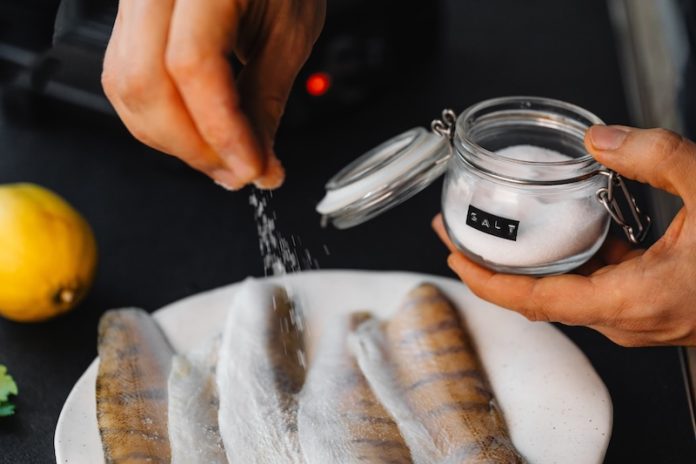
When it comes to managing your sodium intake, knowledge and culinary exploration can be your allies in achieving your sodium goal.
By following some simple tips, you can gradually reduce your taste for sodium, making it easier to enjoy a lower-sodium diet.
Read the Nutrition Facts Label: Start by checking the Nutrition Facts label on packaged foods. Compare and choose items that provide less than 100% of the Daily Value (DV), which is equivalent to less than 2,300 mg of sodium per day.
Prepare Your Own Food: Whenever possible, cook your meals from scratch. Limit your use of packaged sauces, mixes, and “instant” products like flavored rice, instant noodles, and ready-made pasta.
Add Flavor Without Sodium: Reduce your reliance on table salt when cooking, baking, or dining. Experiment with no-salt seasoning blends, herbs, and spices to infuse flavor into your dishes.
Buy Fresh: Opt for fresh meat, poultry, and seafood over processed varieties. Check the packaging on fresh meat and poultry to see if any salt water or saline solution has been added.
Watch Your Veggies: When it comes to vegetables, choose fresh, frozen (without sauce or seasoning), or low-sodium or no-salt-added canned options.
Give Sodium the “Rinse:” Before consuming sodium-containing canned foods like beans, tuna, and vegetables, give them a good rinse. This helps remove some of the sodium content.
“Unsalt” Your Snacks: Select snacks that are labeled as low sodium or no-salt-added. You can also opt for healthier alternatives like nuts, seeds, or crunchy carrot and celery sticks instead of salt-laden chips and pretzels.
Consider Your Condiments: Condiments can be sneaky sources of sodium. Choose light or reduced-sodium condiments, use oil and vinegar on salads instead of bottled dressings, and go easy on the seasoning from flavoring packets.
Reduce Portion Sizes: Eating smaller portions naturally leads to lower sodium intake. Prepare modest-sized portions at home and practice portion control when dining out. Consider sharing an entrée with a friend or taking home leftovers.
Make Lower-Sodium Choices at Restaurants: When dining out, take the initiative to request that your meal be prepared without table salt. Ask for sauces and salad dressings to be served “on the side” so you can control the amount you use. Also, inquire about available nutrition information and choose menu options that are lower in sodium.
By embracing these strategies, you can embark on a flavorful journey to reduce your sodium intake while savoring delicious and health-conscious meals. Over time, your taste for sodium will adapt, making it easier to stick to a lower-sodium diet and reap the benefits of improved health and well-being.
Follow us on Twitter for more articles about this topic.
Copyright © 2023 Scientific Diet. All rights reserved.





